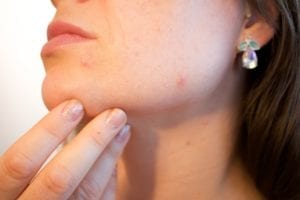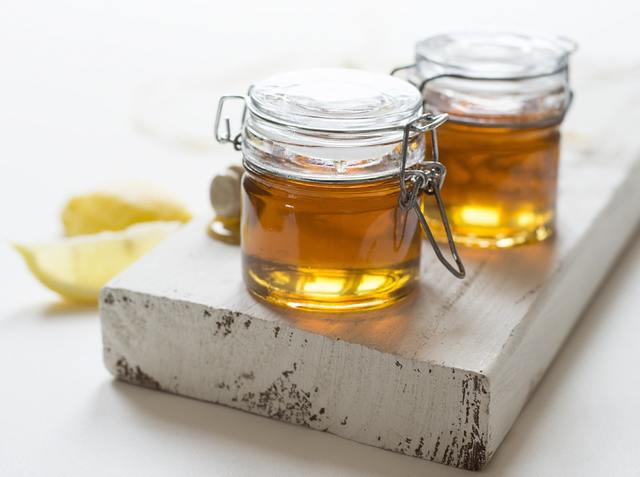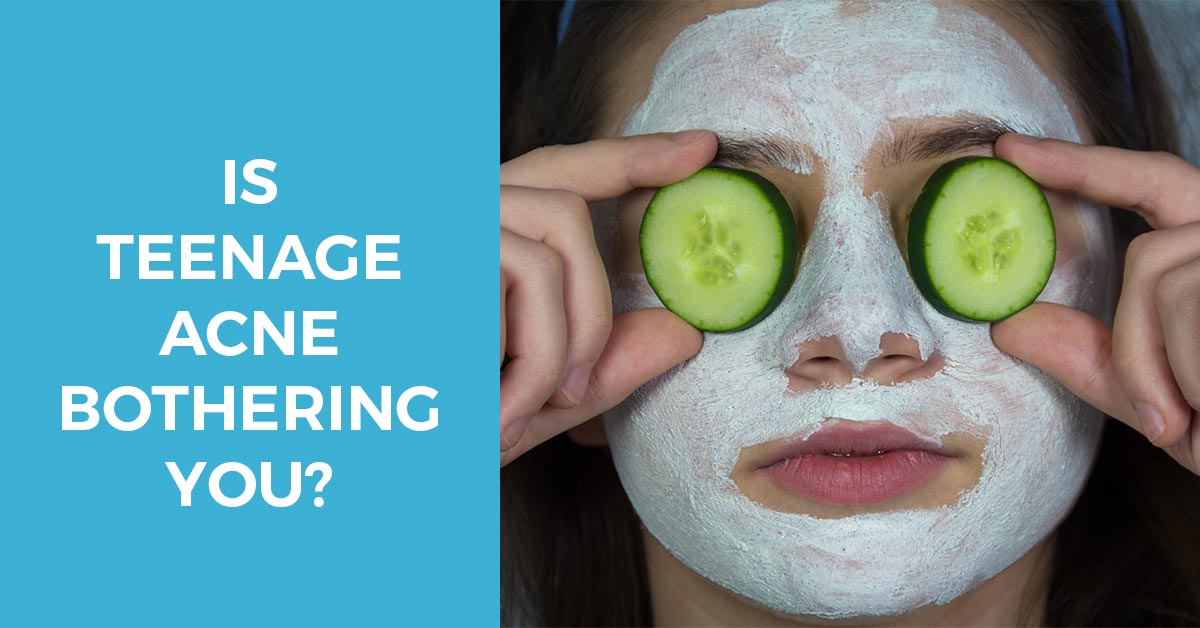Contents
Ah, the teenage years. Some people think that teens have it easy with their carefree lifestyle.
But what many people don’t know (or may have forgotten) is that  the teenage years are not always a walk in the park for everyone. Aside from juggling school work and socialization, teens have to deal with emotional ups and downs of life – from fitting in and dealing with bullies (remember Regina George?) to battling with acne.
the teenage years are not always a walk in the park for everyone. Aside from juggling school work and socialization, teens have to deal with emotional ups and downs of life – from fitting in and dealing with bullies (remember Regina George?) to battling with acne.
Acne and Self-Esteem
Teenage acne is no laughing matter. In fact, if you’ve had acne as a teen, you know that it’s a traumatizing experience.
According to AcneAcademy.org, one out of eight 11 to 30-year-olds experience having acne at one point in their lives. Regardless of how common acne may seem, it does not change the fact that it’s one of the worst experiences that anyone could ever have.
Dealing with the onslaught of blackheads, whiteheads and pimples can be damaging to one’s self-confidence. One huge zit can make a huge impact on a teenager’s life. The emotional impression of this skin condition can be so devastating to one’s self-esteem.
In the United Kingdom, acne sufferers receive verbal abuse from family and friends due to their skin condition. A survey, which was conducted by the British Skin Foundation, reveals that 56.78% of the 2,000 participants have received some form of verbal attack due to their acne.
This beautiful London-based makeup lover was ridiculed on social media for her bad skin. (Source: My Pale Skin)
Of the 2,000 respondents, 20% have ended their relationships due to acne, while 10% have been unfairly discharged from work. Shockingly, 20% of the survey participants have contemplated about committing suicide due to their bad skin.
This information reveal that acne does not only affect people’s view of their physical appearances, but also of their personal lives, mental health and self-worth. Although the worst-case scenario here, which is contemplation of suicide, does not occur to every teen, nobody can deny that suffering from acne means experiencing distress in other areas of one’s life.
DID you know, that there are many different types of acne? Which one do you have?
How to get rid of teenage acne
The good news is that acne is treatable—and preventable. Having acne does not mean it’s the end of the world (although it may most certainly feel that way when you’re a teen).
Getting rid of teenage acne requires a lot of patience, so don’t get upset if you don’t see the results you were hoping for right away. To get rid of teenage acne, you need to consider the following things:
Gently cleanse your skin
Teenage acne is not caused by a dirty face, although it can exacerbate it. Acne-prone skin requires some TLC as anything that’s too harsh on the skin can make you break out even more. In cleaning your skin, choose a gentle cleanser with a balanced pH. Why does this even matter?
 On a scale of 1-14 (1 being most acidic and 14 being most alkaline), 7 is the neutral pH level. This is the pH level of water. However, the skin’s protective barrier (called the acid mantle), requires a slightly acidic environment. The acid mantle blocks pollution, bacteria and other infection that could lead to acne.
On a scale of 1-14 (1 being most acidic and 14 being most alkaline), 7 is the neutral pH level. This is the pH level of water. However, the skin’s protective barrier (called the acid mantle), requires a slightly acidic environment. The acid mantle blocks pollution, bacteria and other infection that could lead to acne.
Therefore, the skin’s natural pH level of 5.5 is ideal as the slight acidity helps fight the development of acne. A cleanser that matches the skin’s natural pH is perfect because it does not strip away the oils that help protect the skin from infection and inflammation. Regular bath soaps tend to be extremely alkaline and drying on the skin especially when used on the face.
Not sure which cleanser has the right pH level? This spreadsheet should help you pick one that’s most suited for your skin type. Don’t mistake the tingling sensation that a cleanser gives for its efficiency. Most of the time, the tightness or cooling sensation that you feel from using a skincare product is mostly due to its fragrance or alcohol content, which can both aggravate your acne.
To be sure, check out the ingredients list before buying a cleanser or any skincare product for yourself.
Stay away from drinking alcohol or smoking cigarettes
This is not a public service announcement from your friendly government health institution. It’s more of a reminder of what certain bad habits can do to your skin. Teens are naturally curious about what it’s like to drink and smoke.
Although the curiosity is normal and expected, it doesn’t help in clearing up your acne. According to Acne.org, smoking increases the production of free radicals that cause inflammation. So the more you smoke, the bigger chances you have of experiencing acne breakouts. Similarly, drinking alcohol can worsen your acne condition.
As a hepatotoxin, alcohol can damage the cells that detoxifies the body. It also dehydrates the skin, which is why your skin looks sallow in the morning following a drunken spree. Moreover, too much alcohol weakens the immune system, which keeps acne infection under control. It also alters hormone levels among teens. Hormonal fluctuation is one of the reasons why teen get acne in the first place.
Be mindful about the food that you eat
If teens could have it their way, it’ll surely be pizza day every day. Though there’s nothing wrong with indulging yourself in “bad” foods every now and then, remember that it can bring some repercussions to your skin.
The scientific journal Skin Therapy Letter released a report in 2010 stating that certain foods can worsen acne vulgaris. One of the food groups that can exacerbate acne is dairy.

Cow’s milk is a staple among nearly all dairy products. The problem with cow’s milk is that it spikes blood sugar levels, which cause overproduction of sebum that contributes to acne.
Additionally, cow’s milk contains hormones that lead to the overgrowth of skin cells that eventually block the pores. Another acne culprit stated in the report are high-glycemic-index foods. High GI foods are those that break down in the body rather quickly.
Think white bread, potato chips, cakes and processed breakfast cereals. Like dairy products, high GI foods cause an insulin spike that causes acne inflammation. To lessen the occurrence of acne, choose foods that have low-glycemic load. These are vegetables, some fruits and whole grains.
Treating teenage acne naturally
There’s no guarantee that acne will leave you for good. Even if you religiously cleanse your skin, eat a healthy diet, and get enough physical activity, you’re bound to have a zit or two in the future.
However, there are natural teenage acne treatments that can help you cope with the occasional acne breakout. For more serious acne problems, it’s best to consult a skin doctor or dermatologist before trying any of these treatments.
Tea tree oil
From softening dry cuticles to fighting foot odor, tea tree oil is a versatile cure that should always be in your medicine cabinet. Its most popular use, though, is healing acne inflammations. Tea tree oil has excellent antibacterial properties, thanks to its terpenes content—a type of oil that eliminates bacteria and soothes the skin.
Tip! To use tea tree oil for acne, mix a few drops of tea tree oil with about 30 drops of witch hazel. Using a cotton swab, apply the mixture to where you have acne inflammations. Doing this will help lessen the flare-up, although it could take a couple of days before there’s any noticeable difference in the size of the acne.
Honey
Whether you use it to sweeten your tea or to add some healthy sweetness to your desserts, honey is undeniably a very useful ingredient in the pantry. But the goodness doesn’t stop there. Honey is also an effective treatment for acne.
As an antiseptic, honey prevents the growth and spread of bacteria. When used topically, it can disinfect your skin and reduce the swelling and redness of a pimple.

Raw honey is best in treating acne. You can get it from your local health food store. Stay away from processed ones (those that come in plastic bear and other cute bottles) as they contain other ingredients that can make your acne even worse.
Tip! To use honey on your skin, wash your face with a gentle cleanser and apply the honey on your skin while it’s still damp. Let the honey mask stay on for 10 to minutes before rinsing and following up with a toner and moisturizer of your choice. (Warning: If you’re allergic to bees and bee products, it’s best not to use honey to avoid allergic reactions.)
Apple cider vinegar
Apple cider vinegar has been receiving a lot of praises lately due to its number of health benefits. Aside from being effective in killing bacteria and dissolving dead skin cells that cause teenage acne, apple cider vinegar also helps maintain the skin’s natural pH level. Additionally, it also helps fade out acne scars.
Tip! You can replace your regular
toner with apple cider vinegar for treating teenage acne naturally. Mix one part apple cider vinegar with three parts water and soak a cotton pad with the mixture. If you have extra sensitive skin, you can dilute the vinegar with more water to avoid irritation.
Witch hazel
Witch hazel may sound like an ingredient for a magical potion, but this extract is an effective astringent and moisturizer that helps speed up skin healing.
Also an antioxidant, witch hazel also helps kill bacteria from the pores thanks to its tannins content. A bonus: witch hazel also slows down the signs of aging – excellent news for those who are battling both acne and wrinkles.
Tip! You can get witch hazel extract from local health stores. To use it as a toner, soak a cotton ball with witch hazel extract and apply it to your face.
Let it dry for a few seconds before following with a moisturizer. You can also use witch hazel to heal bruises, reduce redness and swelling, and lessen itching from insect bites.
Chamomile tea
Chamomile tea is best known for its  calming effects on the nerves. But did you know that it is also used for tempering acne flare-ups?
calming effects on the nerves. But did you know that it is also used for tempering acne flare-ups?
With its antioxidant, anti-bacterial and anti-inflammatory benefits, chamomile is the go-to cure for treating acne breakouts. Drinking it as a tea can help reduce future acne breakouts, but you can also use it topically to relieve acne symptoms.
Tip! To use chamomile tea as a topical acne treatment, open a tea bag and grind its contents and mix it with a bit of water to form a paste. Apply the paste to acne spots and leave it on for a few minutes to absorb before rinsing. You can also steep a chamomile teabag in a cup of hot water. Once the tea has cooled, dip a cotton ball and use it as a toner.
TIP: Check out our comprehensive guide – how to get rid of acne!
The takeaway
Although teenage acne can be a pain, the world won’t end if you get flare-ups every now and then. Hormonal changes during teenage years are often to blame for the nasty zits that you see on your face. Following a healthy skincare routine combined with a balanced diet and physical activity can help lessen the onset of acne breakouts. It also helps to know which natural teenage acne treatments are proven to work on problematic skin.
If you’re concerned about the severity of your teenage acne, seek a dermatologist’s help so you can get the right treatment for your skin.
What natural acne treatments have you tried so far? Did it work well on your acne-prone skin? Share your answers below.



